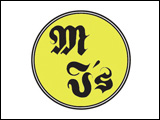Ah Spring, the season of changing weather and seemingly unavoidable congestion that comes along with it. Here are a few reasons why you might typically struggle this time of year and suggestions on how to manage and prevent your symptoms.
1) Seasonal Allergies/Hay Fever/Allergic Rhinitis
This is an allergic reaction in the nasal passages and airways to normally harmless environmental triggers. It is an abnormal exaggerated inflammatory immune response characterized by a release of chemicals, including histamine, into the bloodstream to defend against common allergens, including pollens, mold, pet dander, dust mites. This chemical release in turn, causes symptoms such as itchy, runny nose, headache, watery eyes, swelling, sneezing, scratchy throat, post nasal drip, sinus pressure, etc.
2) Sinusitis
This is an infection or inflammation of sinuses. Sinuses function to clean, heat and humidify air so it reaches the lungs in optimal condition. They are covered by a layer of mucus and tiny hairs (cilia) that sweep mucous filled with contaminants into the throat to be swallowed and dealt with in the stomach by HCL (acid). Inflammation causes sinus openings to close up and traps mucous in cavity, providing optimal environment for bacterial infection. Symptoms include nasal discharge/congestion, post nasal drip, headache, sneezing, cough, sore throat, facial pain, nasal polyps, trouble breathing/smelling, and fever.
3) Extrinsic (Allergic) Asthma
This is characterized by inflammation of the lungs along with tightening/spasms of the bronchi, and overproduction of mucous in the airways due to a hypersensitive immune response to harmless airborne allergens. This is considered an inflammatory allergic condition that triggers the release of chemicals, like histamine. Symptoms are observed in the lungs and include shortness of breath, coughing, wheezing, etc.
Recommendations:
Diet:
- Focus on consuming plenty of fresh fruits and green foods as diets high in antioxidants have been shown to improve asthma and provide important defense against harmful agents in the body that increase allergic reactions.
- Drink plenty of water and ensure adequate fibre to ensure toxin elimination.
- Avoid processed, refined, artificial ingredients.
- Eliminate any food sensitivities that may be contributing to an allergy.
- Reduce mucous forming foods (bananas, dairy, and oranges).
- Gradually introduce local bee pollen & raw honey into the diet to help inoculate against seasonal allergies/hay fever.
Supplements:
- Anti-Histamines: Vitamin C & Quercetin, Magnesium
- Anti-Inflammatories: Curcumin, Omega 3 Fatty Acids (high EPA) and Proteolytic Enzymes (Bromelain, Papain, Serrapeptase)
- Immune Support: Probiotics, Plant Sterols, Medicinal Mushrooms (i.e. cordyceps, chaga, lion’s mane, maitake, reishi), Astragalus, Saccharomyces Cerevisiae, Vitamin D3
- Natural Antimicrobials: Horseradish, Garlic, Echinacea, Ionic Silver, Citrus Extracts, Oregano
- Helpful Herbs: Anticatarrhals/Decongestants (reduce swelling & thins mucous in nose and throat to help remove excess from body) – Elderflower, Nettle, Goldenseal, Plantain, Wild Cherry; Antispasmodics (relax and dilate airways) – thyme, plantain, eucalyptus, chamomile, astragalus, rosemary, lobelia, mullein, hyssop, horehound; Demulcents (soothe irritation or inflammation in mucous membranes) – marshmallow, mullein, fenugreek, slippery elm, licorice, horehound, wild cherry; Expectorants (loosen or induce removal of excess mucous from respiratory tract/lungs) – elecampane, lobelia, eucalyptus, thyme, hyssop, horehound, cowslip; Anti-asthmatics – Rosemary, Juniper, Wild Cherry
*Core Mucus Buster: N-acetylcysteine (NAC) acts to break down and thin out mucous, helping the respiratory tract to clear mucous, reducing coughing and improving oxygen saturation in the blood.
Other Suggestions:
- Lifestyle – Cleanse. Improve Digestion (consider enzymes). Manage Stress/Sleep. Consider Facial Acupuncture. Avoid Toxins. Quit Smoking.
- Reduce Exposure to Allergens- Shower after being outside. Install an air purifier in the rooms you spend the most time in. Consider investing into a vacuum cleaner with a specialize filter designed to catch and trap very fine particles. When dusting, use a damp cloth to trap and hold the dust instead of stirring it back up into the air. Close windows between 5am-10am, as these are peak pollen times. Look for specialized bedsheets and pillow covers designed to seal away allergens that may have accumulated. Use natural household cleaners free of chemical irritants that can trigger allergies and migraines.
- Consider Nasal Irrigation/Neti Pot – This consists of passing slightly saline water through one nostril and allowing it to drain through the other while breathing through the mouth, the salt helps to draw out mucous and rinse out allergens from the nasal passages, aiding to discharge built-up mucous and offer symptom relief.



